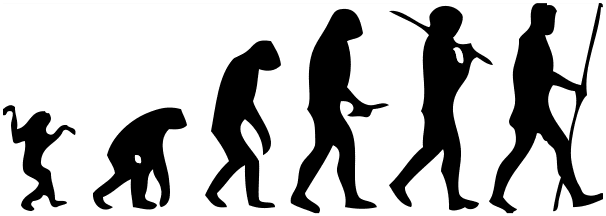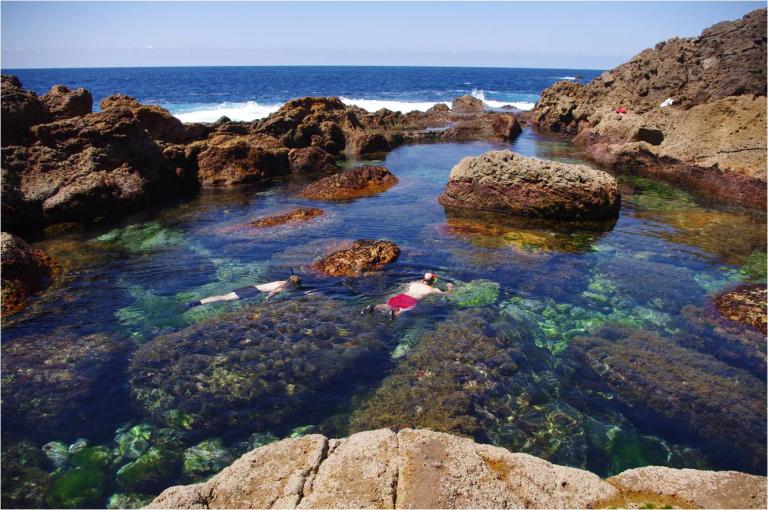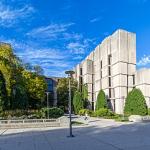
(Wikimedia Commons public domain image)
I have a new article up in Meridian Magazine and I hope that you’ll take a look at it. In it, I recommend a book that I recently read and that I very much enjoyed: “How Can We Make Sense of Evolution?: A Latter-day Saint Perspective”
Now let me continue on that subject for just a little bit. Although a few critics on the Peterson Obsession Board maintain that I’m a young-earth creationist who completely rejects evolutionary biology, I’m not. As I’ve said on the multiple occasions that people have asked me how old I believe the Earth and the Universe to be, I answer that they are, respectively, 4.543 billion and 13.7 billion years old. At least, subject to revision those are my current estimates. However, I think that I tend to be quite a bit more sympathetic to the questions raised by some in the “Intelligent Design” movement than is the author of the book in question. That will possibly be evident from the next portion of this blog.

Below, I share with you a lengthy quotation from Matti Leisola and Jonathan Witt, Heretic: One Scientist’s Journey from Darwin to Design (Seattle: Discovery Institute Press, 2018). Matti Leisola, DSc, is a bioengineer and former dean of Chemistry and Material Sciences at Helsinki University of Technology. He is an expert in enzymes and rare sugars, having published 140 peer-reviewed articles and won the Latsis Prize from the ETH-Zürich (the Eidgenössische Technische Hochschule Zürich, the Swiss Federal Institute of Technology). He served for a time as the research director of Cultor, an international biotech company, co-founded the International Society of Rare Sugars, and was the founding editor of BIO-Complexity.:
In the same era, the Englishman Thomas Huxley gave a talk at the Royal Geographical Society. There he told about a jelly-like matter found on the bottom of the sea. He named it Bathybius haeckeli, in honor of [Ernst] Haeckel, his fellow Darwin disciple, and suggested that a slimy layer of the stuff covered perhaps hundreds of square miles on the sea bottom. He proclaimed it the missing link between inorganic matter and organic life. In reality it was only a precipitate that was formed when alcohol was added to seawater.
Darwin contributed to this tradition of imaginative origin-of-life storytelling in an 1871 letter to Joseph Hooker:
It is often said that all the conditions for the first production of a living organism are now present, which could ever have been present. — But if (& oh what a big if) we could conceive in some warm little pond with all sorts of ammonia & phosphoric salts, — light, heat, electricity &c present, that a protein compound was chemically formed, ready to undergo still more complex changes, at the present day such matter would be instantly devoured , or absorbed, which would not have been the case before living creatures were formed.
Met by such imaginative yarn-spinning it is surely reasonable to ask what does experimental science actually tell us about the origin of life, fanciful storytelling aside? Part of the answer is that, for a time, experimental science seemed to offer tentative support for the idea that life could emerge spontaneously from very humble source material. The ancient Chinese found evidence that aphids could spontaneously generate from bamboo. Documents from ancient India reference the spontaneous generation of flies from dirt. And the Babylonians concluded that canal mud could generate worms. No less a thinker than Aristotle concurred, seeing no reason to doubt these ancient testimonials.
Later, in the Renaissance, the Flemish chemist and physician Jan van Helmont wrote instructions about how to get mice to emerge from pots containing moist seeds and dirty rags.
But how all this could be remained a mystery. The discovery of microorganisms began to cast doubt on the idea that life regularly and easily sprang from non-life. And eventually the French Academy promised a reward to the one who could solve the puzzle. Louis Pasteur got the prize after showing with an ingenious experiment that living organisms — and specifically in his case, microorganisms — do not form spontaneously. Experiments in the decades that followed confirmed his findings. It was soon conventional wisdom: In the normal course of things, only life begets life.
The hope of finding experimental evidence for the spontaneous formation of life has, however, not been abandoned. It was now clear that life from non-life is not part of the usual course of things, but perhaps it did belong to the realm of the unusual and long ago, and perhaps this possibility could be demonstrated in the lab. The biochemist Alexander Oparin’s 1924 Russian-language work The Origin of Life offered a partially testable hypothesis for how this might have happened. And John Haldane, apparently unaware of Oparin’s Russian-language work, offered a similar proposal in English in 1929. A generation later, in 1953, Stanley Miller put their ideas to the test.
A picture of Miller’s equipment has been featured in practically every biology textbook since then. The public has been led to believe that thanks to Miller’s experiment, the problem of the origin of life has largely been solved, at least in broad outline. The 1960 declaration of famous paleontologist George Gaylord Simpson in the journal Science is representative: “The consensus is that life did arise naturally from the nonliving and that even the first living things were not specially created,” he wrote. “The conclusion has, indeed, really become inescapable, for the first steps in that process have already been repeated in several laboratories. (21-23)

Here’s an interesting story: “76% of Utahns identify a religious affiliation, the largest of any state: Several denominations have grown in Beehive State in past decade”
Such statistics may bear some slight relationship, at least, to Utah’s appallingly poor performance in recent metrics. I’ve already mentioned this one, for example, but you may have missed it. In any case, you can take it as representative of my adopted state’s miserable record: “Utah ranked the No. 1 overall state by U.S. News and World Report: Utah takes the crown for the third year in a row”













